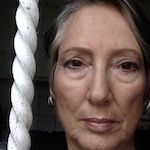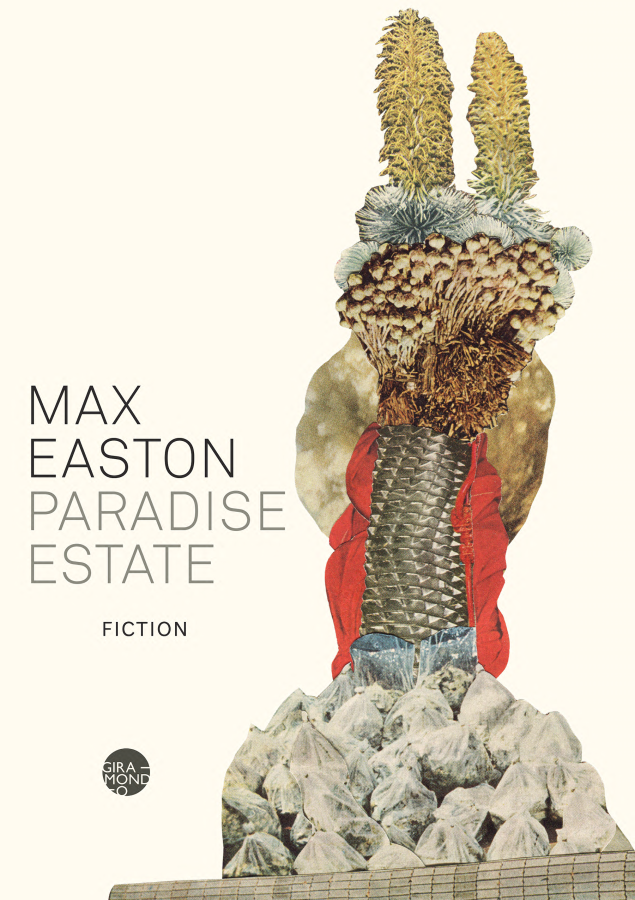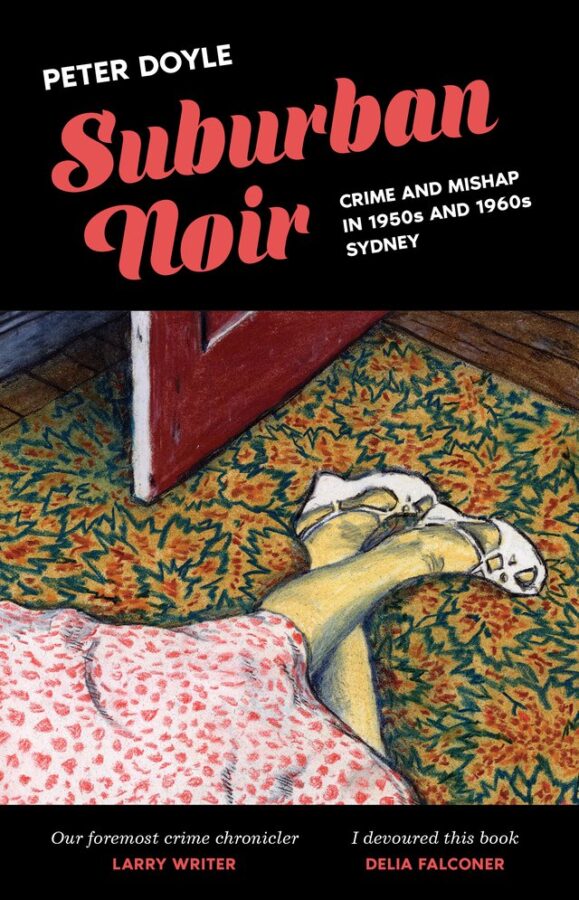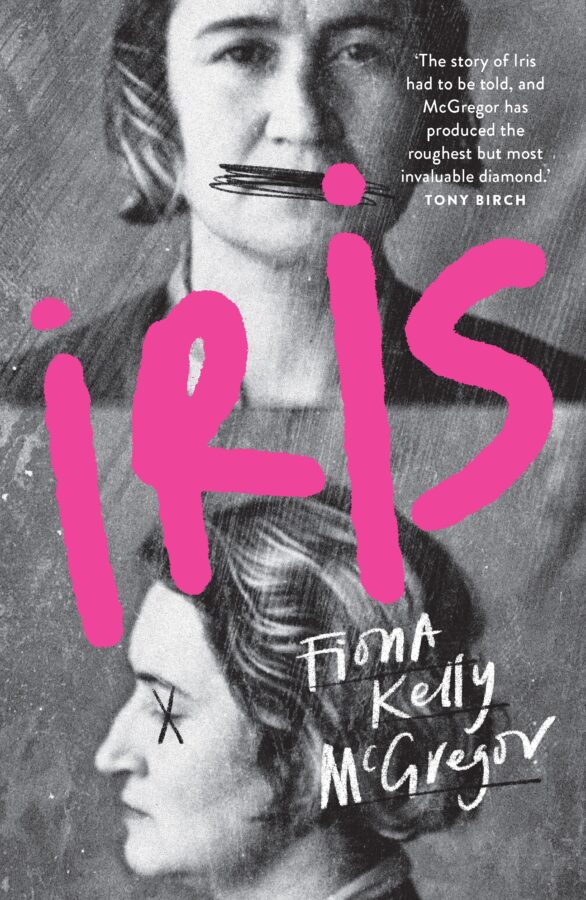With so many local references to Glebe Point, you’d think that Glebe was a peninsula culminating in a point. However, Glebe is like a rounded breast nestled between the peninsula arms of Balmain and Pyrmont, and slightly bulging into the harbour. The Point is a nipple, a pointy constructed thing between Rozelle Bay and Blackwattle Bay and the site of the historic house, Bellevue. Once though, before the invasion, there were abundant wetlands on each side of Glebe, in the Blackwattle Cove Swamp and the Johnson’s Creek Swamp. Called ‘swamps’ rather than ‘wetlands’. Then, Glebe would have been more of a peninsula, surrounded by water on three sides.
The house where I live is located on the rolling hills above the Blackwattle wetland paradise. But people polluted the wetlands and the harbour with industrial and human waste, attempted to banish the Gadigal people who lived off the rich aquatic resources and reclaimed the swamps as habitable land. These days, my house is on a hill above a couple of busy roads that traverse the now dry-ish wetland site. We wake to the hum of traffic on Wattle Street and the Anzac Bridge where once only bird calls were heard. Life lights up when the corellas turn up and can be distinguished over the traffic. These days a huge yellow crane greets us at our front door and swings silently across the Cowper Street development site where ten-storey towers are going up.

Glebe was called ‘the architects’ suburb’ during the days of colonial building. The architecture is known as Early Australian but there was an earlier and much older architecture here too: the glittering white midden towers that lined the foreshore of Sydney harbour, work of thousands of years. Documented by invading soldiers, erased, destroyed and cannibalised for lime mortar in colonial buildings.
A canvas is never empty – John Cage.
A number of buildings around Sydney are known as ‘historic houses’ for their European associations, but the name is even more apt when we realise that they are sites of cross-cultural entanglement. They have what archaeologist Philip Jones has called ‘a double patina […] of ochre and rust’. In addition, there are many other places where built reminders of the Aboriginal past may not survive, but which can still be recognised for their historical associations – Paul Irish.
I stand in my gallery on Glebe Point Road. There’s a show on by Glebe photographer Tom Psomotragos and I’m looking at one of his life-sized photographs of a young Aboriginal man standing in the Italianate doorway of a Glebe house, leaning against the door jamb. The photo has that golden patina you can find on a Glebe evening in summer. I stand there in the same room where I once purchased my own out-of-print books. The gallery is located in the space that was previously home to the Cornstalk Bookshop.

In recent decades, locals in various organisations like the Glebe Society have fought and won battles to transform some of the Glebe land into public use and we now have a beautiful and popular foreshore walk and parkland along the waterfront. Some fragments of wetland and swathes of native bush have been restored. It sounds like not much but just to be able to walk through a piece of real bush, smell that smell of bushland, connects me back to the bush of the Blue Mountains where I spent my childhood, where my mother was born.
There are connections, reconnections and connectedness in Glebe. The Aboriginal network is like a web, stretched thin and sparse since invasion. There has always been an Aboriginal presence here. My own history is like a series of webs stretched thin across the suburb, across the seven different places I lived in. My architectural, artistic, feminist and literary histories are all here, overlaid and traversing the decades.

my earliest memories of Glebe
are my parents’ memories
of first meeting at Sydney Uni
studying Medicine
my father recruiting Mum for the Labor Club
bastion of progressive politics
a heady mix of ideology and romance
Mum lived with her sister Josephine
in a rooming house
in Arundel Street
run by Miss Sherack, the hoarder
of Depression era men’s handkerchiefs, damask tablecloths
memories of walks
common Glebe pastime
walk to the city, walk to Paddington
walks through the Uni
my own feet treading the same paths
thirty years later and until today
down all the way to the water
clapping hands under the fig trees
to see the fruit bats fly up
watch their nightly migration
from the figs in Victoria Park
to the figs at the Point
cool in the night air
like black kerchiefs flapping silently
and now nearly eighty years later
doing the same thing
calling up events and memories
tracing lines back to the buried tram tracks
surprised by the synchronicity, the continuity
of one who broke away
but didn’t break away
My three cousins and I walk with my mother along Arundel Street where our mothers lived together, slept in the same bed, studied in the same room, studied Medicine a few years apart. Around the same time, my future stepfather arrived in Glebe as a 16-year-old to work as a clerk in the Vanderfield and Reid timber yard on the Point. The timber yards were still there when I first came to live in Glebe in the seventies. There were huge logs floating in the water at the end of Glebe Point Road. The harbour still a working harbour. I have a painting I did around 1974 at the Point looking towards Glebe Island Bridge that shows the waterfront area as it was – shabby, industrial. So different from today with its restored mansions and expensive apartments.

We stand outside looking at the house, then are invited in by a group of people who occupy the place today. None of the old shabbiness remains, none of Miss Sherack’s hoarded boxes, none of the makeshift kitchens on closed-in balconies.
the first place I lived in Glebe in the seventies
was a couple of rented rooms
in a crumbling waterfront mansion
a bay window in a big room
overlooking the Harbour Lighterage Company
with their fleet of tugboats
that chugged home in the evening
twinkling lights under the stars
an industrial scene in miniature
with their cranes and slip rails
I remember my parents
mother shedding a tear
at the state of the walls
that she would become immune to
eventually
after visiting more of the same
down the years
vintage Glebe
the land sloped all the way to the water
with no fence
and at the water’s edge in the shallows
was a small beach
and walking into the water
the brown mud squelched between your toes
seemed saturated with grease
embedded with shards of civilisation
sharp things
today the waterfront walk has claimed a slice
of waterfront land
from the end of the bay winding around
to the busy highway
beautifully landscaped Council initiative
I stand at the water looking up at the old mansion
at its bay window
at the still unpainted derelict walls
just as they were 45 years ago
now the slope to the water
once dry and bare
is jungle
the big Harbour Lighterage crane
now an arch over the path
historical remnant

Ramshackle Glebe
In the late sixties my partner Colin Mitchell and I both dropped out of our architecture studies at Sydney University and after stints in Newtown and the Cross, happened upon a flat in an old waterfront mansion in Oxley Street where a couple of friends were living. Colin has great interior design skills. Unfortunately the landlady liked the work he had done and evicted us so her daughter could move in.
In 1972 Colin met someone on the 431 bus on the way to work in the CBD and they told him about a flat coming up in 13 Leichhardt Street, one street back from the water. The loungeroom of the flat had very little light and the walls were painted with dark blue gloss paint. Just the ticket. Over the years, that block of flats has housed endless artists, writers and other cultural workers. A few people who were there in the seventies: Martin Johnson, Neil Moore and Julie Rose, George Alexander, Karen Donaldson and Mary Fallon.
The first literary event I went to was a reading organized by writer Rae Desmond Jones in 1974 when he was sharing a house in Arcadia Road with the poet Ken Bolton and others. There I met Joanne Burns, Joseph Chetchuti and Stephanie Bennett. Rae was publishing the small magazine Your Friendly Fascist and it was at Arcadia Road that Ken started Magic Sam magazine.
From 1976 to 1980 I lived in two other flats in the Leichhardt Street block with Ken Bolton. All those great times: producing the small press magazine Magic Sam and the book series Sea Cruise Books, the hours typing on roneo stencils, using the Student Union roneo machine to print, silk-screening the covers up at the Tin Sheds at Sydney Uni, doing the collation around tables shoved together, using the big guillotine and electric stapler at Tomato Press on Glebe Point Road, gathering with writers in our flat for long nights of conversation, doing readings at Gleebooks and the Cornstalk.
We didn’t have regular jobs for a few years in the seventies and were often woken up by visitors in the morning and went to sleep as we showed out the last visitor at night. Writers from interstate dropped by and slept on our lounge, sometimes for weeks on end. It was kind of hectic.
Theoretical Glebe, an incubator
all the theories I’ve known
situated in Glebe
Psychoanalysis, Freudian and Jungian
The Open Classroom
The Hidden Order of Art
Modernist art and abstraction
the Nouveau Roman writers and The New York School
critiques of Post Modernism
the worry that it was a conservative trend
Habermas, Adorno, Benjamin, Hal Foster
being labelled a post-modernist writer
Glebe, hub of experimental writing!
literature and The Left,
Feminism
finding Antigone Kefala, Sneja Gunew and Efi Hatzimanolis
Sue Kucharova, Paula Abood
exploring identity on the periphery
introduced to Edward Said’s Orientalism by Minas Poulos
reading Luce Irigaray and Gayatri Spivak
Liz Grosz visits No Regrets (women writers’ workshop)
Systemic Linguistics, sociolinguistics
Bloom’s Taxonomy
The Uncanny of myriad connections, The Abject of the ramshackle. The indigestible grit of 45 years of layered experience in the same two square kilometres.
In 2005 our family received an invitation to an event at Saint Scholastica’s College, a private girls school in the ritzy part of Glebe. The staff at the College were publishing a book about the treasures of Saint Scholastica’s and these included sixteen enormous stained glass windows in the chapel of the school. Unknown to us these were made by my great-grandfather, Jan Radeci in the 1920s. Our atheist family had always dismissed Jan and his work, except for the idea that someone might have ‘the artistic gene’. My own painting studio in the seventies was two hundred metres from the chapel, but I was unaware that his work was nearby. I stand in my studio on Glebe Point Road now, holding a small watercolour paintbox stacked with coloured pans like the ones Jan chose for painting the Australian landscape. Slowly going mouldy. I remember one of his watercolours – of a gold miner standing with his pick on a blank sheet of paper.
A stained glass artist, Christopher John, visiting from Queensland, turns up in my gallery. We get talking. We go to see the Saint Scholastica’s chapel together and for the first time, I’m able to contextualise Jan Radeci’s work. ‘He’s definitely Art Nouveau, look at those free and loose brushstrokes on the drapery!’, says Christopher. I start to revise my opinion of my great-grandfather, who I’d previously only associated with his lugubrious dark wood panelled house in Hurstville, with its painted plaster Madonna and picture of Jesus with a bleeding heart. Maybe he was more switched on than I’d thought, he with the artistic gene.
The source of the myriad connections in Glebe is its diversity. Tom Psomotragos: …the public housing estate is the beating heart of Glebe and the source of its diversity. There’s the historic Protestant/Catholic division and the north and south divide of the suburb, marked by Bridge Road. This diversity is not only religious and ethnic it’s also class-based. Everyone and everything is here or has been here. Tiny place, big footprint. Sixty per cent renters, a population of about 11,500 constantly turning over. The student and academic suburb, the industrial suburb, the bohemian, the artistic, musical and literary suburb, the workers’ suburb, the Left suburb – Unions and Parties, the public housing estate. 67 Glebe Point Road, Women’s Liberation House in the seventies (site of the pre-dynastic phase of Australian feminism, to borrow Suzanne Bellamy’s phrase) now Pamakon Café, run by a retired architect from Singapore and his family. Every inch is history.
Erasures and rewritings. Layer on layer.
In the seventies some of us women writers tried not very successfully to manage the male hysteria about feminist intervention in the writing scene. From the early incarnation of the Poets Union we set up the Sydney Women Writers Workshop, later to be renamed the No Regrets group by Pam Brown. A group of women in the Poets Union noticed that all the women active in the Union were there because of their male contacts. Women writers didn’t seem to have independent voices. Susan Hampton suggested we start a women writers group and it happened. We intended to incubate writers so more women would end up participating actively in the writing scene. Over twelve years from 1978 – 1990, we continued to hold our workshops in our lounge rooms. Many of the women who passed through the group went on to become well-known writers and activists: Susan Hampton, Joanne Burns, Pam Brown, Chris Mansell, Dorothy Johnson, Inez Baranay, Mary Fallon, Jill Jones, Jenni Nixon, Caroline Gerrish, Sarah St Vincent Welch, Barbara Brooks, Moya Costello, Jane Skelton, Virginia Shepherd, Gina Mercer, Sue Kucharova, Marion Consandine, Coren Caplan, Anna Valerio, Loretta Re, Jo Garolis, Annee Lawrence, Chitra Fernando, Beatriz Copello, Lee Cataldi, Carmel Kelly, Sal Brereton, Erica Callan – the list goes on.
Now Candy Royale runs a poetry reading series in the Friend in Hand pub on the corner of our street. Listening to those readings takes me back, it reminds me of the days in the seventies, of feminist poetry readings where it was solidarity all the way. And Toby Fitch runs a reading series at Sappho Bookshop on Glebe Point Road and he blatantly encourages experimental writing.
In 1986, I heard about an artist-run collective gallery across the Glebe/Ultimo boundary called the Kelly Street Kolektiv, housed in the old warehouse that is now the International Grammar School. A few friends said, ‘There’s this amazing guy called Hilik (Mirankar), you’ve got to meet him!’ So I did and we’ve been living together for more than thirty years now and we run The Shop Gallery together. The Kelly Street Kolektiv was a revelation at the time. It had similar ideas to the Poets Union, promoting practitioners independently of the mainstream art structures, with the same internal conflicts about independence. The Kolektiv policy: We accept anyone who calls themselves an artist.

I first saw Hilik in the early eighties, sharpening knives outside a butcher shop on Glebe Point Road, working on a strange loud contraption on the back of a motorbike with a water cooler rigged up over the sharpening wheel. Hilik, more knit into the local community than I could ever be. Out there, working on the streets, making connections every day. Knows everyone, known by everyone. Filled our street up with his wood sculptures in the neighbours’ front balconies.
There is a postcard of a painting by painter and chef Eloise O’Hare commemorating twenty years of the Badde Manors coffee shop. It shows a multitude of tiny figures engaged in a variety of activities – including Hilik sharpening knives on his motorbike.

When we first met, Hilik had a studio in an old warehouse building in Ultimo, just across the Bay Street boundary from Glebe. I could stand outside my house on the slope of Queen Street and see him working in his studio on the third floor of the building at about the same level. A series of poems I wrote and that were published in a bilingual English-Chinese chapbook, Small Wonders in 2012, referenced the idea of ‘the local’ and our connection in the local Glebe environment. Following is an excerpt from one of those poems, ‘Even if it happened’:
from a distance, two small figures
outlined in the square of light in the doorwayI can see you and you can see me
the third floor about level when I stand on the hill
in the street outside my houseand the big warehouse now a school
and you with me inside the house now
our past association surrounds usthe ghost outline of ourselves
still hovering there on the facade of
the new building.
For three decades I commuted out of Glebe to teach in the western suburbs, teaching art in Intensive English Centres for twenty years and then for ten years, moving closer to home and teaching ESL in a mainstream high school. I stopped teaching a few years ago and found myself back in Glebe full time. It felt like a return to the days of the seventies, and now, running an art gallery on the main street, life is wall-to-wall art again.
A friend who was a long-standing resident of Glebe recently returned to live in the baby blue tower that overlooks Wentworth Park, occupies a flat on the twelfth floor. I visit her to take photos as the sun sets and see a Glebe panorama I hadn’t seen before. In the south, exquisite white clouds hover over the Broadway Shopping Centre with its neon signs glowing in the twilight. To the west, the sunset burns over the rows of terraced houses and the glass walls of the city buildings in the east turn green.
The title of this essay is taken from an essay by John Cage titled ‘On Robert Rauschenberg, Artist, and his Work’.
Postscript
My parents Stefania Siedlecky and John Couani were both doctors who spent about 25 years working in partnership as GP’s. Stefania had worked in Family Planning for many years part time and was the first woman doctor who helped to set up the Leichhardt Women’s Health Centre. She subsequently became Adviser on Women’s Health to the Federal Government, studied Medical Demography and received an AM for her work. John worked in the psychiatry field in Sydney for some time, becoming involved in radical psychiatry. He also lived in Glebe during the seventies with his partner, the psychiatrist Helen Borman and my brother Adrian Couani.
Works cited
John Cage, On Robert Rauschenberg, Artist, and his Work (1961).
Anna Couani, even if it happened, Small Wonders Flying Islands Press (2012).
Paul Irish, Hidden in Plain View: The Aboriginal People of Coastal Sydney, NewSouth (2017).
We are grateful to the City of Sydney for funding to commission and publish these essays.




